Philips Hue Festavia vs Nanoleaf holiday string lights: which festive smart lights shine the brightest?
Christmas lights, keep shining on
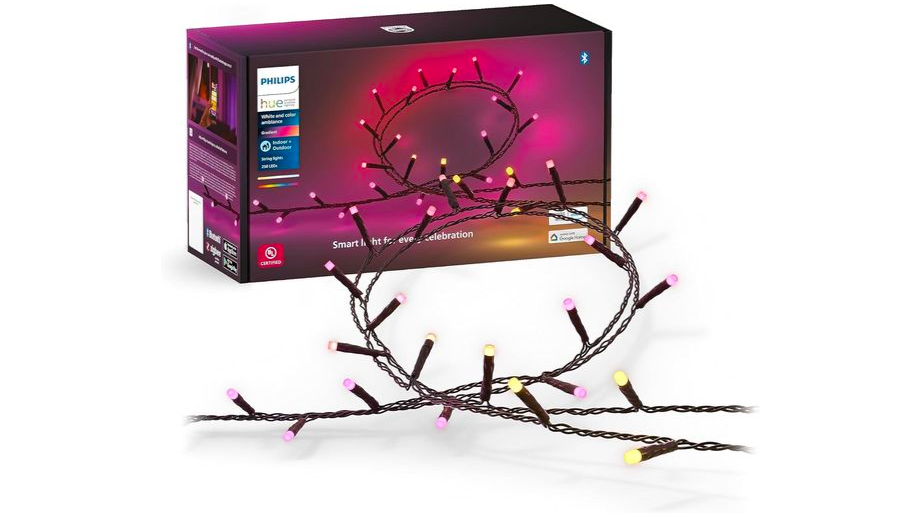
When Philips Hue’s Festavia lights are abstracted from their festive responsibilities, they make for a fantastic set of vibrant and vivid string lights. They come in three different lengths (though this varies by region) and feature Hue's famed vibrant LEDs, however, when used as tree lights or to bring some seasonal cheer, these lights lack identity and pale a little against some of the more affordable, festive-first lights.
For
- Indoor and outdoor
- Bright with bold colors
- Broad compatibility
Against
- Very expensive
- Black cord
- Lacks festive cheer
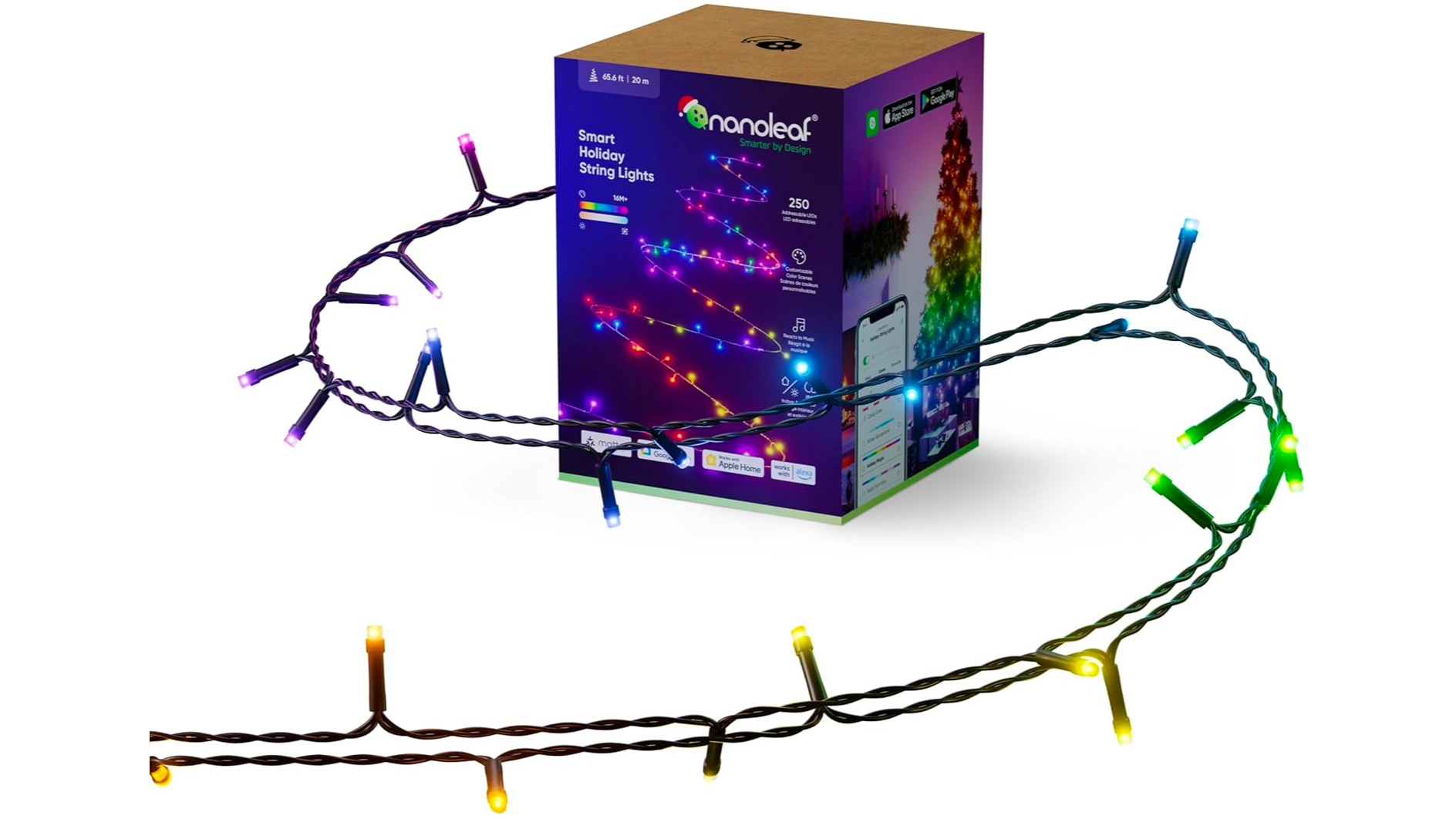
The Nanoleaf Smart Holiday String Lights are a much cheaper alternative to the Phillips Hue Festavia Christmas lights and are a whole lot more customizable. However, the app is less intuitive, there's almost a little too much you can do with them, and you can only choose from one length.
For
- Indoor and outdoor
- Great selection of scenes
- Broad compatibility
Against
- App is a bit wayward
- Black cord
- Some features are hard to find and use
It's the most wonderful time of year, but no season is safe from the effervescent glow of the best smart lights. Two of our all-time favorite smart lighting brands have gone head-to-head with competing holiday lights - but who comes out on top?
The best smart home devices are increasingly packed with festive features, but it's only in recent years we've started to see smart light brands create products specifically for the holiday season. App-controlled lights have been available since the early 2010s, but until now there's not been an awful lot of buzz around fully smart-home integrated string lights.
However, that all changed last year when the Philips Hue Festavia hit the scene. In 2023, not only did the brand release an updated version now suitable for outdoor use, but Nanoleaf entered the fray with its own festive string lights. Both brand's lights offer customization, vibrant colors and impressive brightness, but there are some pretty significant differences nonetheless.
To help you choose which smart holiday lights might be best for you, we've compared the design, specs and performance of each set below to see which comes out on top.
Philips Hue Festavia vs Nanoleaf smart holiday string lights: Specifications
Before we dig into the pros and cons of each product, here's a quick overview of the key specs we're working with. For ease, we've compared models of the same string length for both, but it's worth noting Philips Hue also offers 100 and 500 LED lights (varies by region)
| Row 0 - Cell 0 | Philips Hue Festavia | Dyson V15 Detect Absolute |
| Price: | $219.99 / £199.99 / $359.95 | $99 / £119 |
| Dimensions (250 bulb model): | 65.6-foot / 20m, LED spacing 3-in / 7.5cm | 65.6-foot / 20m LED spacing 3.15in-8cm |
| Designed for: | Indoor and outdoor (IP54) | Indoor and outdoor (IP44) |
| Connectivity | Bluetooth and Hue Bridge | Wi-Fi, Bluetooth |
| Compatibility | Matter, Alexa, HomeKit, Google Assistant, SmartThings | Matter, Alexa, HomeKit, Google Assistant, SmartThings |
| Lifetime: | 15,000h | 10,000h |
| Lumens | 300lm | 250lm |
| Light color: | 16 million | 16 million |
| Wattage: | 7W | N/A |
| Extendable?: | No | No |
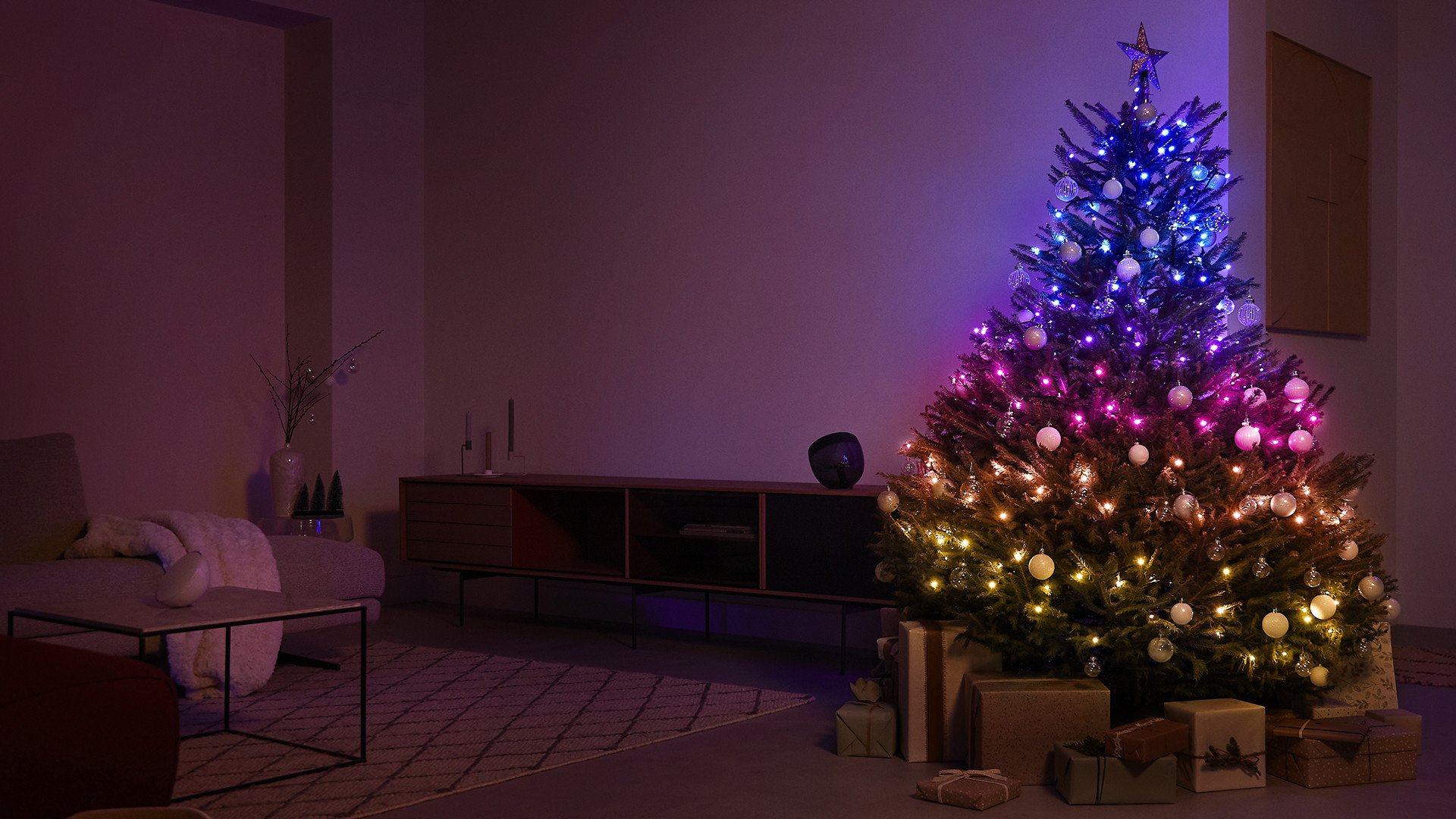
Philips Hue Festavia vs Nanoleaf smart holiday string lights: Price
Nanoleaf is not exactly a budget smart light brand, but compared to Hue, its products are generally a lot more affordable. That being said, both brands have been known to produce some pretty extortionately priced devices.
To assess the value we're not just comparing smart lights to smart; your average run-of-the-mill holiday lights will cost roughly $20 / £15 / AU$10. I'll rip the band-aid off now; you'll be paying considerably more for any set of smart string lights.
There are three different length options available from Philips Hue, though availability varies across regions. The 100 LED, 26.2-feet / 8m model costs £109.99 / AU$199.95 (No US availability), the 250 LED, 65.6-foot / 20m model costs $219.99 / £199.99 / AU$359.95 and the 500 LED, 131.2-foot / 32m model costs $359.99 / AU$589.95 (No UK availability).
Nanoleaf's lights, however, are only available in the US and UK as of writing, and in one length; 250 LED, 65.6-foot / 20m for $119 / £119. That makes them almost half the price, and Nanoleaf is much more prone to hosting sales than Hue in our experience.
There aren't an awful lot of smart string lights on the market to compare these prices too outside of Govee, but the popular app-controlled lighting provider, Twinkly, offers a very high quality alternative that costs $139.99 / £139.99 / AU$270 for its 250 LES, 65.6-foot / 20m model.
- Winner: Nanoleaf
Philips Hue Festavia vs Nanoleaf smart holiday string lights: Design
In reality, these products are almost identical - but there's enough of a difference to claim a winner in this segment.
There are lots of similarities between Nanoleaf and Philips Hue's festive string lights; to the naked eye, and especially while bundled for storage, these lights look exactly the same. Both puzzlingly opted for a black cord (with no option for a green wire that would more easily blend into a natural color tree), and both opted to split the length of lights into two strings of 10m long, connecting in the middle by the power supply.
This is supposedly to make for easier tree decoration, but we suspect it has more to do with the power safety; regardless, it does make decorating a tree marginally easier once you've wrapped your head around it, but makes the lights a lot less usable elsewhere.
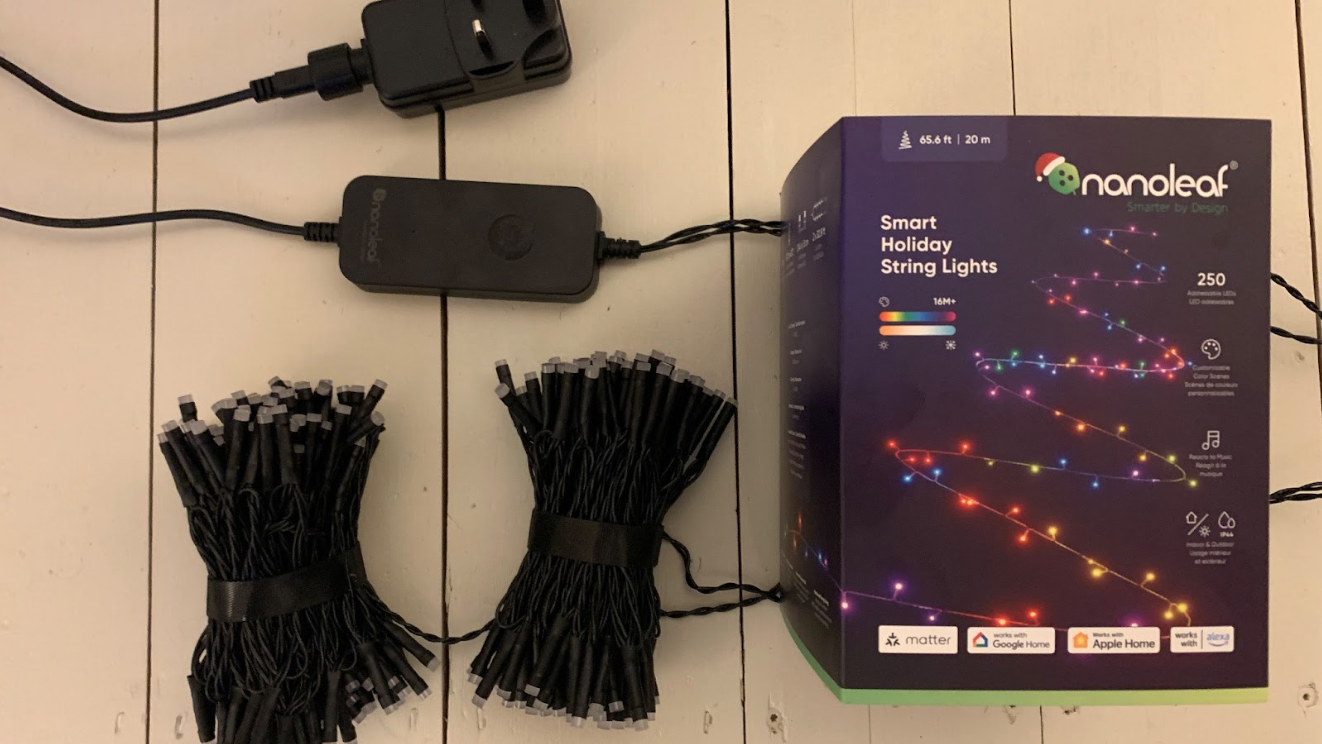
There are only a handful of marginal differences, and the first one is going to require some maths. Philips Hue purports the Festavia lights will last 15,000h while Nanoleaf's only lasts for 10,000h.
That might not sound like much, but would suggest Hue's lights would 208 whole days longer than Nanoleaf's. Another way to visualize this would be if we imagine a household that has holiday lights hung up for a whole month every year, illuminating them for an average of 8 hours a day, meaning the lights are on for roughly 248 hours per year. That would effectively mean you have up to 20 more years with Hue than you do Nanoleaf. Now, whether or not the software to support Hue's lights will still be available in 60 festive seasons' time is a separate question, and it'd be a great surprise if there weren't significantly improved tree lights by then.
Nanoleaf's lights do come with a controller built into the wire, however, allowing you to cycle through the pre-programmed effects that come with the lights. This is a big win over the Festavia lights which can only be affected by the Philips Hue app.
However, Philips Hue's lights feel ever so slightly more robust than Nanoleaf's in terms of build quality, but it's rather difficult to nail down exactly why this is outside of slightly more expensive materials and construction. The Festavia lights are also outdoor-proofed with IP54 waterproofing versus Nanoleaf's IP44.
- Winner: Tie
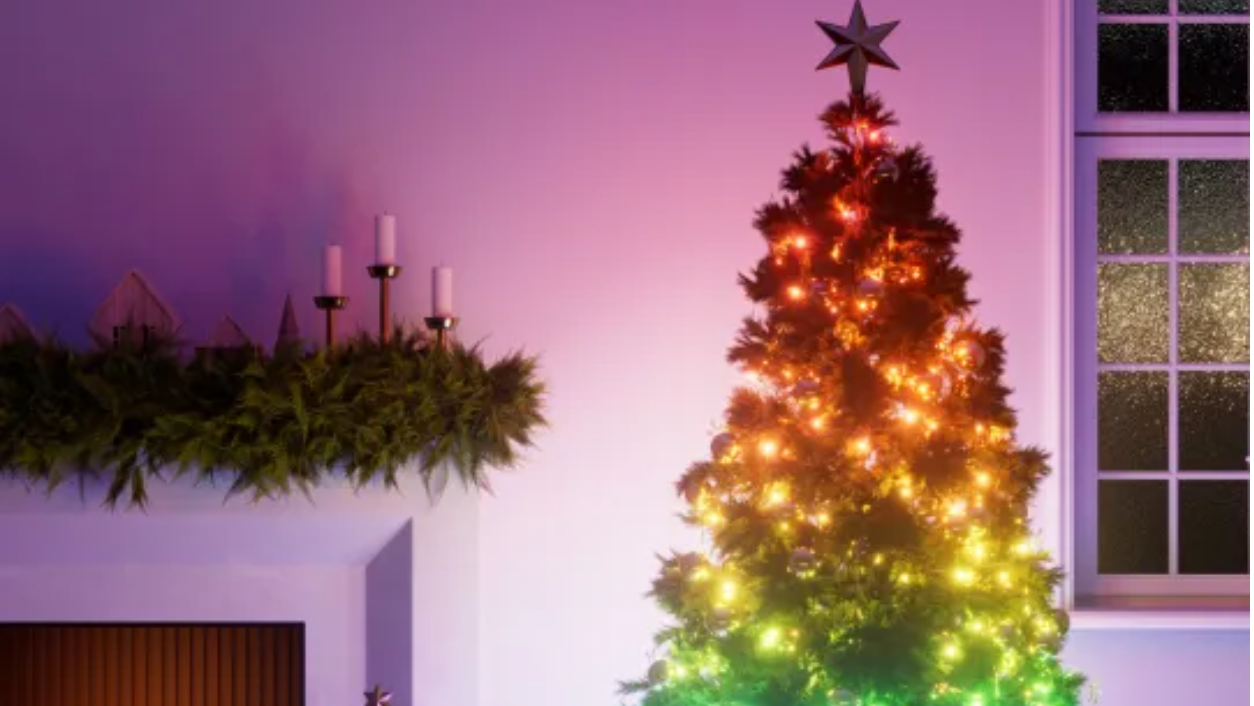
Philips Hue Festavia vs Nanoleaf smart holiday string lights: Performance and app
Performance marks perhaps the greatest divide between Nanoleaf and Philips Hue barring the price. Everything from the app to the specs and the customization varies wildly between the two products.
One area where Festavia takes the lead is specs. These aren't the brightest lights I've ever seen, but I don't necessarily expect - or want - blinding brightness from string lights. Outputting a modest 300lm, Philips Hue's Festavia lights pull just ahead of the Nanoleaf smart holiday string lights' 250lm, but it's a very marginal difference.
The color vibrance to the naked layman's eye is pretty much identical, both models offer 16 million colors, and both offer 1-100% dimming. Nanoleaf can take a little longer to follow through on instructions, but it's a pretty small difference. Connectivity is almost identical between the two, too.
The in-app experience is where things get interesting. On the one hand, Philips Hue's app is undoubtedly better than Nanoleaf. It's clean, well-organized, intuitive, and just great-looking. Pairing is incredibly easy, and there's a handy tutorial specifically for these lights in the app.
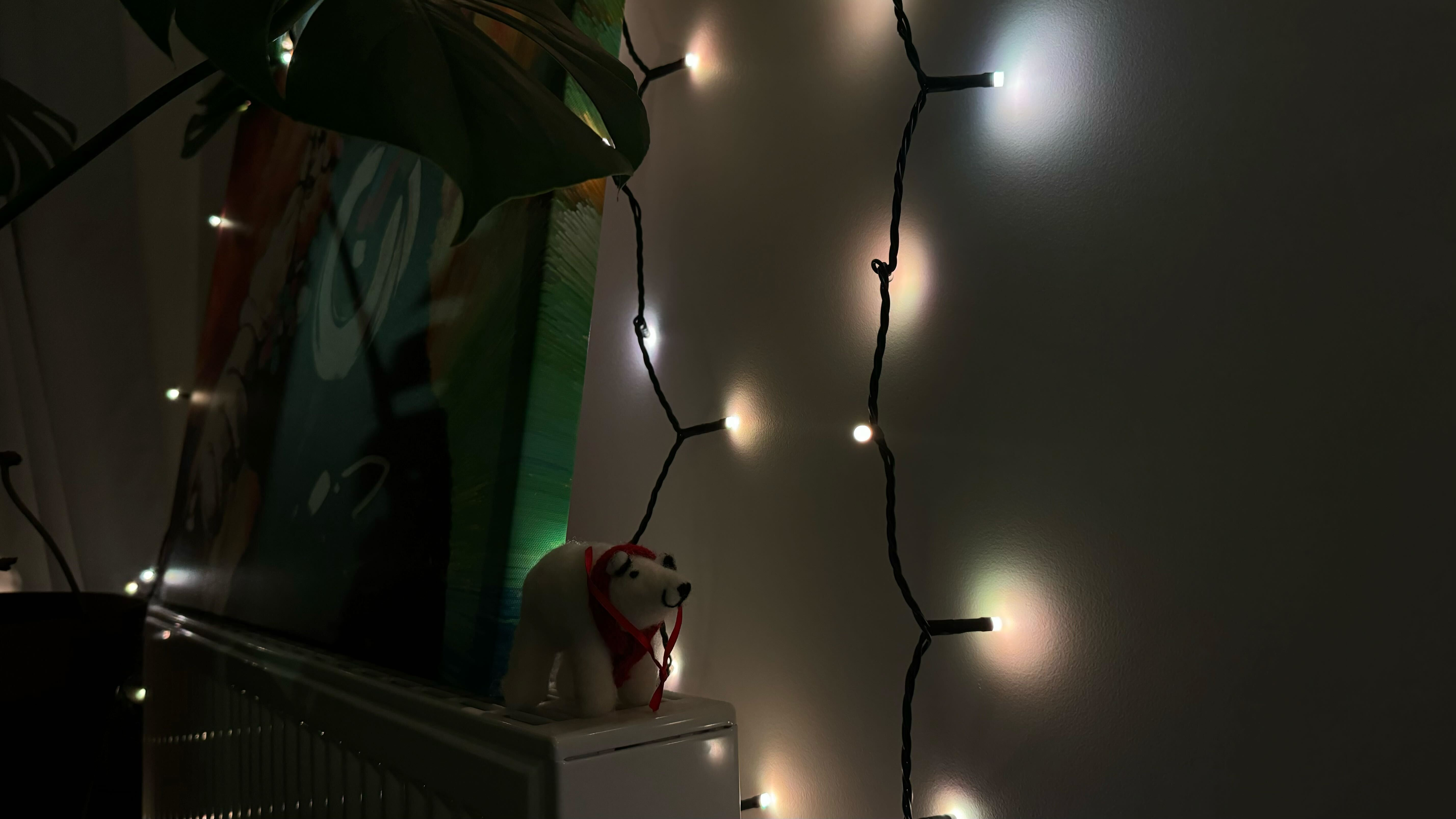
Conversely, the Nanoleaf app can be finickity at best. Its array of menus can be a bit counterintuitive to navigate, and some of the pre-set scenes and palettes have the same name, meaning you end up struggling to find what you want at times. We've found that especially shortly after the release of a product, Nanoleaf's software can take a bit of a beating, but given they've already released two software updates in the month since release, there's hope yet. During our testing, we did experience some HomeKit connectivity issues and features that broke after updates, but again we're confident this isn't a long-term issue given Nanoleaf's track record of community support.
However, the massive game-changer here is in customizability. One of the key benefits of getting smart holiday lights is gaining the ability to set your own tone and create your own scenes, especially in tandem with the rest of your smart light setup. However, it's also important the lights function as tree decorations, given that's the main function.
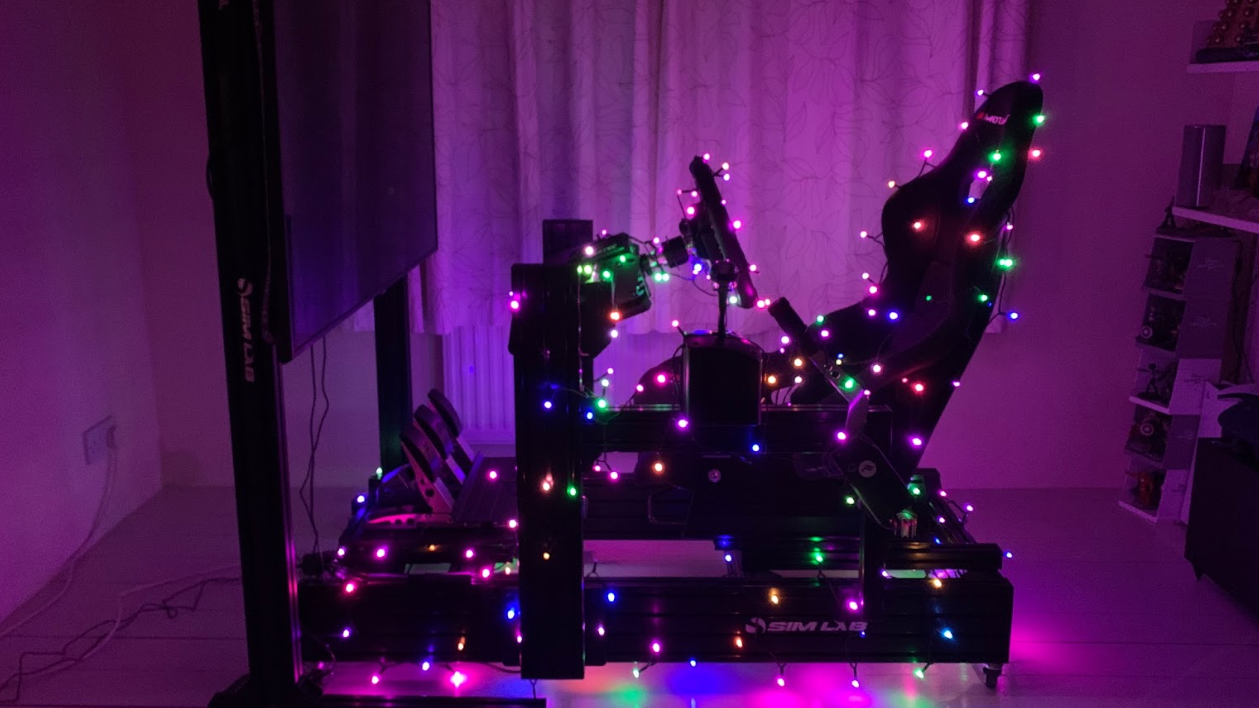
This is where Philips Hue loses a lot of goodwill. Only six effects are compatible with these lights; candle, fireplace, glisten, sparkle, prism, and opal. None of them can be customized and only two are particularly festive and suitable for tree decoration, so you're stuck either with block colors, color gradients, or scattered colors. You can choose up to six colors depending on your light setting.
On the other hand, Nanoleaf offers near-limitless customization and, in all honesty, blows Philips Hue out of the water. It comes with nine preconfigured scenes, which right out of the box are infinitely more festive than any of Hue's options. These can also be controlled using the physical switch if you don't fancy the smart approach. Additionally, Nanoleaf offers seven different light effects (or Motions, as Nanoleaf calls them) which can be applied to your palettes. Each palette can consist of up to seven colors.
It's also worth highlighting Nanoleaf's active community, wherein different users can publish their scenes - this comes in very handy if you're not a fan of the menu-diving required to create the perfect scene.
- Winner: Nanoleaf
Philips Hue Festavia vs Nanoleaf smart holiday string lights: Which one to buy?
Typically, the quality and robustness of Philips Hue's products mean we're far more likely to recommend them, especially if money is no object. However, money is an object and quite frankly, Philips Hue's Festavia string lights are overall inferior to Nanoleaf's smart holiday string lights, which offer ample customization, a physical controller, and a much more approachable price tag. No, Nanoleaf's lights won't last as long, but unless you're looking to use these lights year-round, it's very unlikely you'll care to use these festive lights for much longer than their lifespan.
You might also like
Get daily insight, inspiration and deals in your inbox
Sign up for breaking news, reviews, opinion, top tech deals, and more.

Josephine Watson (@JosieWatson) is TechRadar's Managing Editor - Lifestyle. Josephine is an award-winning journalist (PPA 30 under 30 2024), having previously written on a variety of topics, from pop culture to gaming and even the energy industry, joining TechRadar to support general site management. She is a smart home nerd, champion of TechRadar's sustainability efforts as well and an advocate for internet safety and education. She has used her position to fight for progressive approaches towards diversity and inclusion, mental health, and neurodiversity in corporate settings. Generally, you'll find her fiddling with her smart home setup, watching Disney movies, playing on her Switch, or rewatching the extended edition of Lord of the Rings... again.